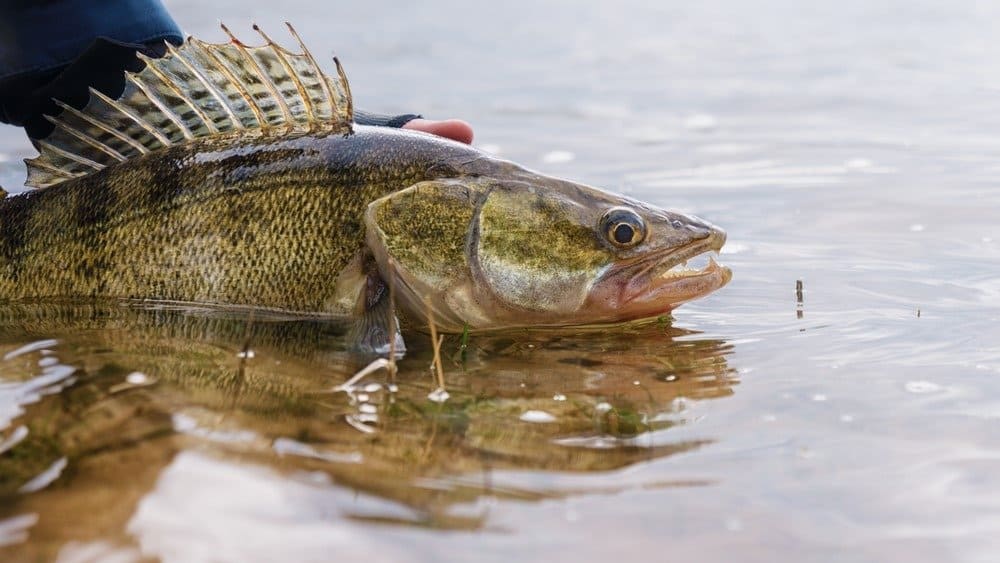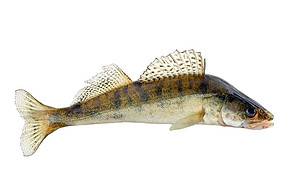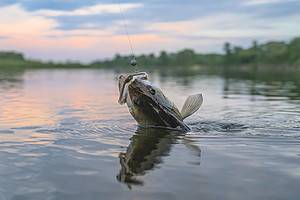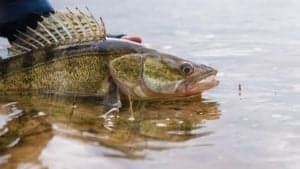Also known as the Buckeye State, Ohio has a long list of official state symbols, from its official bird, the cardinal, to its designated fruit, the tomato. But what kinds of fish represent the state? Furthermore, where can you catch them this upcoming summer? Read on as we explore Ohio’s state symbols, their unique history, and the fascinating struggle Ohioans have had with officially certifying their state fish.

Out of all of the fish species Ohioans have proposed, one stands out as the most popular and beloved of all: the
walleye
.
©wwwarjag/Shutterstock.com
Does Ohio Have an Official State Fish? It’s Complicated
Currently, Ohio does not officially have a state fish! While it does have a long list of official animal symbols and even a state fish fossil in the long-extinct Dunkleosteus, its potential state fish candidates have been the subject of much debate. Over the years, Ohio’s residents and even Ohio state legislators have suggested a wide range of native species to formally represent the state, including the yellow perch, the smallmouth bass, and even the bluegill.
The Poll
However, out of all of the fish species Ohioans have proposed, one stands out as the most popular and beloved of all: the walleye, taxonomic name Sander vitreus. When the Columbus, Ohio-based news outlet, NBC4, held a poll to narrow down options to propose to state legislators in September 2021, the walleye claimed a whopping 27.5% of the votes. During NBC4’s initial survey where they asked readers and watchers to suggest species for the eventual poll, the walleye also made up around one-third of their total suggestions!
The Vote
After tallying the votes and establishing the walleye as the definite victor, NBC4 contacted a long list of state legislators in hopes of introducing a bill to designate the fish as Ohio’s state symbol. Sen. Teresa Fedor (D-Toledo) was the first to respond and become the bill’s primary sponsor. Ultimately, though, the bill failed to get a vote in either of the state’s 134th General Assembly chambers in late 2021.
Interestingly, Ohio has struggled with deciding on its official state fish for decades now–since the 1980s, various state fish bills have been proposed, with every single one failing to get passed. Regardless, it’s clear the walleye has, time and time again, edged ahead of its competition. And, as we’ll touch on below, the species is vital to the state’s history and culture.

Walleye are among the most popular game fish in North America.
©iStock.com/FedBul
Interesting Facts About the Walleye Fish
Sometimes erroneously known as the yellow pike (the species isn’t related to pike but is rather a member of the perch family), the walleye gets its common name from its gleaming, pearlescent eyes. This is due to a layer of light-reflecting tissue, the tapetum lucidum, which reflects light through the fish’s retinas and greatly improves its night vision. However, it can’t see as well in well-lit conditions. This makes it primarily nocturnal, so it feeds in darker areas other fish often avoid.
As one of five species within the Sander genus, walleye are related to saugers and pikeperch. As we touched on above, these fish aren’t related to pike but superficially resemble them. The walleye in particular ranges from around 12 to 28 inches long and can weigh up to 29 pounds. Its long, narrow body is golden in color, with five grayish-brown saddle-like markings along its spine.

Though it is chiefly native to the Upper Midwest, the walleye’s geographic range extends north into parts of southern Canada and east into New England. It has also been introduced to other parts of North America, with non-native populations being scattered across the western and northeastern United States. The walleye has long been an important food source for these regions. Deep-fried walleye is especially popular in Canada, as well as Ohio and the Great Lakes area.
Due to the walleye’s nocturnal nature and tendency to feed in turbid, uneasy waters, fishing for them can be challenging. Anglers search for the species in windy, low-light conditions where waters can be rough. Notably, many fondly refer to these conditions as the “walleye chop.”
In addition to arguably being Ohio’s unofficial, honorary state fish, the walleye is the official state fish of Minnesota and South Dakota. It’s also Manitoba, Canada’s official provincial fish.
Where Can You Catch Walleye in Ohio?
As a cool-water species, the walleye is fairly hardy and can be found throughout much of Ohio’s waters. It thrives in water temperatures of 65 to 70F, though it will attempt to feed as long as temperatures are above 40F or so. This means they’re available to Ohioan anglers practically year-round, perhaps aside from the very hottest days of late July and early August. Generally, though, walleye prefer cool, inland lakes. As we mentioned earlier, they are most active in more windy, choppy water conditions during the evening and pre-dawn hours.
One of Ohio’s prime spots for catching walleye is none other than Lake Erie along the state’s northern border. As the second-smallest and shallowest of the Great Lakes, it is an ideal habitat for the popular freshwater fish. Walleye fishing charters are especially common at Lake Erie during the spring and early summer months.
Lake Erie also boasts several tributaries that provide great spots to search for walleye. Northeastern Ohio’s Sandusky, Grand, and Portage Rivers all have healthy populations of the species. Incredibly, walleye can even be found in the notoriously highly-polluted Cuyahoga; however, you’re unlikely to find any specimens suitable for eating there.
However, if you’re looking for walleye fishing opportunities in southern Ohio, the Ohio River is the best and most accessible option by far. While Lake Erie covers much of the state’s northern border, the Ohio River flows along much of Ohio’s southeastern and southern borders. In particular, the late fall, winter, and early spring months are ideal for catching river walleye.
The photo featured at the top of this post is © ElvK/Shutterstock.com
Thank you for reading! Have some feedback for us? Contact the AZ Animals editorial team.







